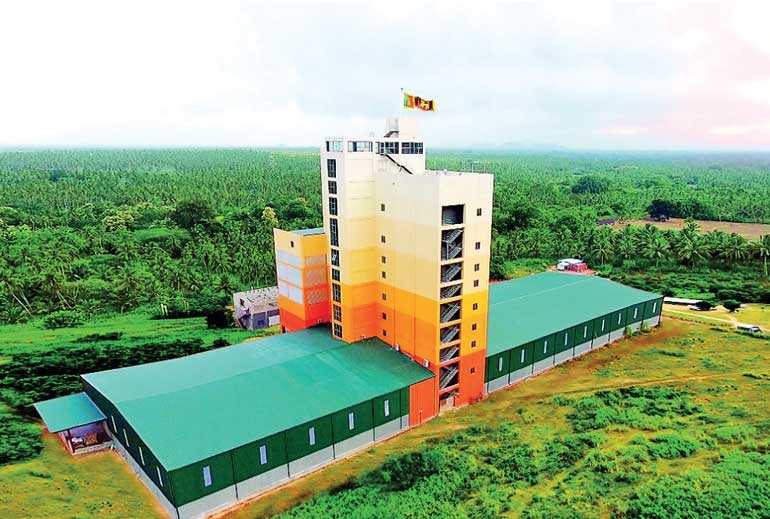Tuesday Apr 01, 2025
Tuesday Apr 01, 2025
Friday, 17 July 2020 00:00 - - {{hitsCtrl.values.hits}}

Across Asia, the issue of food security perpetually hovers over numerous poor and working class households. Many global social organisations list malnutrition as a major regional challenge, with several estimating that Asia houses 67% of the world’s hungry.
This is an extremely relevant issue for Sri Lanka, as a national survey conducted by the World Food Program indicated abysmal levels of acute malnutrition across all 25 of the country’s districts.
These facts considered, Sri Lanka’s poultry industry stands as a crucial weapon in the battle to nourish the 22% of Sri Lankans who are undernourished and 33% who cannot afford an enriching diet.
Prior to the 1950s, chicken was a delicacy even for the most well-heeled in Sri Lankan society. Over time though, with the rapid development of the poultry sector, its price quickly declined to beat out other animal-based food sources, making it a low-cost yet nutritious option for all consumers, regardless of income bracket.
Chicken and poultry products are now a staple component of the Sri Lankan diet, and offer ample nutritional benefits aside from their obvious high quantity of protein. For instance, the maize used to feed the chickens is particularly rich in pro-vitamin A carotenoids, which are converted into Vitamin A once they enter the human digestive system. Vitamin A is vital for the body’s processes of growth, development and immunity.
From an economic perspective, the sector’s yields have been exemplary, with the poultry sector accounting for roughly half of the livestock industry’s 0.6% contribution to Sri Lanka’s Gross Domestic Product. In recent years, poultry’s contribution to the agriculture sector is accelerating at a dizzying pace, and the potential for poultry production to contribute to Sri Lanka’s export revenue is forecast to be high. Presently, broiler hatching eggs and meat are exported to the Middle East and the Maldives, with plans in place for reach to be extended to the European Union market. Furthermore, the poultry industry is among Sri Lanka’s most structured and disciplined tax contributors.
Additionally, the current Government has offered a tax concession for poultry products and exports that in turn can be leveraged to strengthen the country’s poultry industry through an increase in export earnings. A number of companies have already taken advantage of this, especially in the Middle East, where significant market share has been thus obtained. In the current global climate, where massive international poultry markets are at a standstill, opening a line of exports will undoubtedly help Sri Lanka boost its poultry market.
As a major player in this swiftly progressing industry, Crysbro has been at the forefront of battling food insecurity and delivering greater economic dividends through the provision of high-quality chicken.
“Each year, Crysbro bolsters the rural economy by spending Rs. 1 billion to purchase maize from 2,000 farmers in regions such as Moneragala and Mahiyanganaya. Crysbro’s feed mill also allows farmers to engage in direct selling. This entirely erases their reliance on a mediating middleman and ensures that they are compensated immediately after the collection of stocks,” said Crysbro Senior Marketing Manager Amores Sellar.
Discover Kapruka, the leading online shopping platform in Sri Lanka, where you can conveniently send Gifts and Flowers to your loved ones for any event including Valentine ’s Day. Explore a wide range of popular Shopping Categories on Kapruka, including Toys, Groceries, Electronics, Birthday Cakes, Fruits, Chocolates, Flower Bouquets, Clothing, Watches, Lingerie, Gift Sets and Jewellery. Also if you’re interested in selling with Kapruka, Partner Central by Kapruka is the best solution to start with. Moreover, through Kapruka Global Shop, you can also enjoy the convenience of purchasing products from renowned platforms like Amazon and eBay and have them delivered to Sri Lanka.
Discover Kapruka, the leading online shopping platform in Sri Lanka, where you can conveniently send Gifts and Flowers to your loved ones for any event including Valentine ’s Day. Explore a wide range of popular Shopping Categories on Kapruka, including Toys, Groceries, Electronics, Birthday Cakes, Fruits, Chocolates, Flower Bouquets, Clothing, Watches, Lingerie, Gift Sets and Jewellery. Also if you’re interested in selling with Kapruka, Partner Central by Kapruka is the best solution to start with. Moreover, through Kapruka Global Shop, you can also enjoy the convenience of purchasing products from renowned platforms like Amazon and eBay and have them delivered to Sri Lanka.